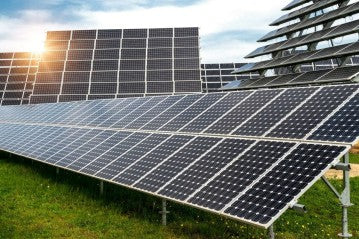
Understanding the voltage output of a solar panel is essential when harnessing solar energy. In this blog, we will explore the voltage production of solar panels, from the individual cell level to the overall panel output. We'll also delve into the distinction between AC and DC power, the role of inverters, and how panel voltage relates to energy generation per hour and per day. Whether you're considering residential or commercial solar installations, this guide will shed light on the volts that power your solar journey.
How Many Volts Does a Solar Panel Produce?
Solar panels produce varying voltages depending on the number of cells they contain. While there are larger cells available, the industry standard is a 156 mm * 156 mm cell that generates 0.5 volts under STC. The total voltage of a panel is determined by adding up the voltages of the individual cells. Common panel configurations include 36, 60, and 72 cells. For example, a panel with 36 cells will produce a maximum voltage of 18 volts, while a panel with 60 cells will produce 30 volts. Cut-cell panels with 120 or 144 cells are also popular.
Solar Panel Output Voltage: AC or DC?
Solar panels generate power in Direct Current (DC). However, homes primarily use Alternating Current (AC). To bridge the gap, inverters convert the DC power from solar panels into AC power, maintaining a voltage of 110 volts and a frequency of 60 cycles per second.
Inverters play a crucial role in transforming solar energy into a usable form for households. Rooftop solar panels typically operate on DC power with low voltage, ranging from 20 to 40 volts depending on the panel type. Installing solar panels involves more than simply mounting them on the roof, as it requires careful design, technical expertise, and adherence to electrical codes.
Properly matching inverters to the panel's output voltage is essential as they are rated in watts. Inverters may experience some power loss as heat, reducing efficiency and wasting a small percentage of power.
How Many Volts Does a Solar Panel Produce Per Hour?
Now that we understand the basics of solar panel voltage, let's explore their output per hour. Solar panels typically generate between 170 and 350 watts per hour, depending on factors like sunlight intensity and climate conditions. On average, a single solar panel produces around 0.17 to 0.35 kilowatt-hours (kWh) of energy. Conventional solar panels can produce between 230 and 275 watts. Consequently, the voltage produced by a solar panel per hour ranges from approximately 228.67 to 466 volts.
How Many Volts Does a Solar Panel Produce Per Day?
After understanding the voltage produced by a solar panel per hour, let's explore its daily output. Multiple factors influence the electricity generation of a solar panel. In the United States, a single solar panel typically produces around 2 kilowatt-hours (kWh) per day, but this can vary.
How Many Volts Does a 300W Solar Panel Produce?
To determine the voltage produced by a 300W solar panel, we need to consider the panel size, solar cell efficiency, and sunlight exposure. In optimal conditions, a 300W (0.3kW) solar panel generates 300 watt-hours (0.3kWh) of electricity in one hour. The voltage output of a 300W panel is approximately 240 volts, equivalent to 1.25 amps.
How Many Volts Does a 500W Solar Panel Produce?
In the past decade, standard solar panels ranged from 200-300 watts, but now there are 500W panels, primarily used in commercial and industrial setups. Information on the exact voltage output of a 500W solar panel is limited. However, sources suggest that a 500W panel typically produces 20-25 amps at 12 volts. With sufficient sunlight, it can charge for 5 to 6 hours.
Conclusion
Solar panels generate electricity through the photovoltaic effect, with their voltage determined by the number of cells and their configurations. While solar panels produce DC power, homes rely on AC power. Inverters bridge this gap, enabling the conversion of solar panel output into usable AC power. The voltage of solar panels per hour ranges from approximately 170 to 350 volts, with daily output averaging around 2 kilowatt-hours per panel. Whether you're exploring the voltage of a 300W or 500W solar panel, understanding their capabilities and matching them with proper inverters ensures efficient energy utilization. Harnessing the power of the sun begins with comprehending the volts that pave the way to a sustainable future.
Ecgsolax has been a key player over the last decade as demand for quality renewable energy solutions has been booming. We never stop innovating because we know how much clean energy means. At Ecgsolax, we offer a wide range of solar products, such as deep cycle batteries, all in one inverters, solar charge controllers, etc. Join us in creating a truly sustainable future!

0 comments